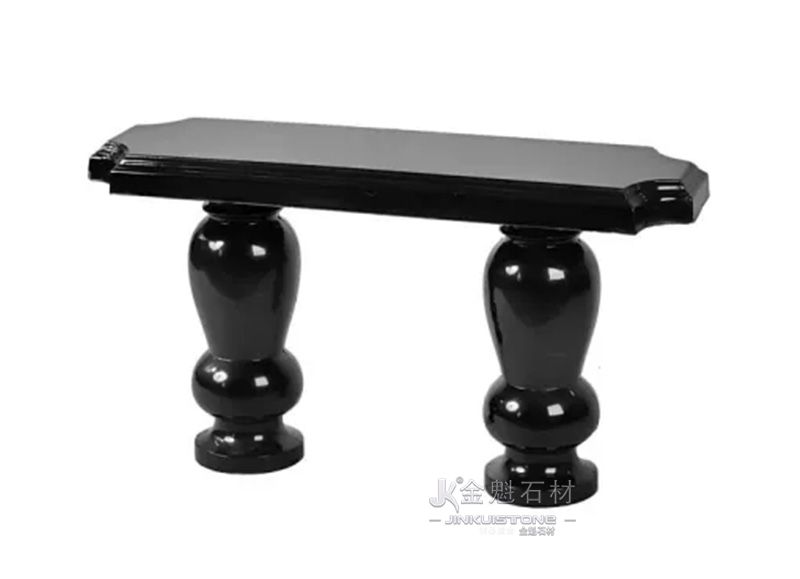How to Create a Memorial Bench
Memorial benches offer a novel way to commemorate a loved one. They afford those in grief an added level of sentimentality — mourners can choose a location or cause that symbolically represents their lost loved one. No longer are memorial plaques tied to existing cemeteries. For instance, surviving family members might purchase a bench at their loved one’s favorite landmark, park, or restaurant. People can also buy a memorial bench as an act of charity, supporting an organization or business that was important to the departed.
While intricate gravestones can be lovely, the dollars spent on a memorial bench can support an important cause, such as national park maintenance. Memorial benches for loved ones benefit those in grief, as well as society at large. They also benefit architects and planners — since these benches are paid for by donation, they present a cost-effective way to beautify an area. In these ways, memorial benches benefit many individuals. Learn more about how to buy memorial benches in this guide.
How to Make a Memorial Bench
Many opportunities are available when it comes to obtaining a personalized memorial bench. Once a mourner has decided on a location, they have several options for placing their bench. Existing adopt-a-bench programs are the easiest option. They’re usually simple to find, marked by existing benches.
Keep in mind some existing adopt-a-bench programs are more expensive than others — endowing a bench in Central Park is bound to come with a higher price than endowing a bench in a small, local park. The more popular the setting, the more it’ll cost to purchase a memorial bench. Do some research to see where these funds go.
If you’re a city planner, architect, engineer, or head of an organization, you can create a new adopt-a-bench program. Purchase memorial benches with blank plaques from a manufacturer — you can purchase in bulk to minimize cost. Once you advertise the opportunity, you’re bound to garner interest.
If there is no existing program in the location of choice, a few other options might be available. There doesn’t need to be an established adopt-a-bench program to erect a bench. These other options may even be more economical.
A mourner could contact a local funeral home or cemetery to ask for suggestions. Often, these businesses have a list of memorial resources on-hand to offer. If you’re starting a new adopt-a-bench program, reaching out to funeral homes and cemeteries is a great way to get the word out.
Another option is to contact the local government, as well as local businesses and organizations like the Young Men’s Christian Association (YMCA). Such groups are likely to be receptive since the mourner’s donation will pay for the bench. A mourner could contact conservancies for local parks, boards for local school districts, or similar groups, offering to donate an endowed memorial bench. If other methods prove unsuccessful, they could reach out to a memorial bench manufacturer on their own.
Tips for Buying a Memorial Bench
When it comes to donating a memorial bench, there are several options. Many manufacturers produce memorial benches for loved ones with engravable plaques, so choosing the right one may seem overwhelming. It’s important to keep a few things in mind when deciding on the right memorial bench.
If you’re designing an adopt-a-bench program, you’ll want to consider these factors to help you choose the right manufacturer. When browsing memorial bench options, take note of the following elements.
Choosing the Best Material for A Memorial Bench
A memorial bench is meant to immortalize someone’s memory — it needs to last for many years without deteriorating. Of course, certain materials fare better than others, especially with permanent outdoor placement. Outdoor furnishings need to withstand the weather and the wear and tear of regular use. You’ll want to purchase benches made from durable materials designed for outdoor placement. Consider the following factors an outdoor bench would need to withstand:
Rain and humidity.
Snow and ice.
Mold, mildew, and rot.
Sun exposure.
Dramatic high and low temperatures.
High winds.
You’ll need to choose a material resistant to rust and corrosion, warping and bending, rotting, molding, and any other possible effects of outdoor placement. Durability and easy maintenance are key. When choosing a memorial bench manufacturer, pay attention to the materials they offer. Weigh the pros and cons of each of these materials:
Wood: While wood looks beautiful and makes for a comfortable seat, it requires a great deal of upkeep. Wood is prone to warping, cracking, bending, and rotting if left unchecked. It can become unfit to bear weight if any of these effects set in. Wooden materials require periodic re-staining and reapplication of protective coatings. Only purchase wood benches if you’re certain proper maintenance is available. Otherwise, your bench may decline into a poor state within a few months or years.
Gauge steel: Steel tends to be a better option for outdoor furnishings. A gauge steel memorial bench is likely to last much longer than a wooden bench while requiring less upkeep. To keep a gauge steel bench standing, all you have to do is tighten screws and replace any broken or worn parts regularly.
Synthetic wood: Certain synthetic wood materials make for superior outdoor furniture, as they can resemble wood without requiring all the upkeep. However, many find them less pleasing to the eye and touch than real wood.
Recycled plastic: Recycling is always great for the environment, and a recycled plastic bench has impressive endurance in outdoor conditions. The con to this option is recycled plastic is less strong than metal or wood, so it may not withstand years of use and weathering.
Wrought iron: Though wrought iron is a stylish and strong material, it’s also susceptible to rust. Rust is simply iron’s reaction to oxygen and water — any metals containing high amounts of iron are prone to rust. A wrought iron bench is a fine choice as long as you can brush away rust and reapply protective paint coats regularly.
No matter which material you end up choosing, be sure to keep up with any required maintenance. Even the most durable materials will need occasional attention.
The Available Personalization
For most people, a memorial bench is all about personalization. That’s why it appeals to grievers. When browsing options, be sure to review the available personalization. Some benches will feature a small plaque in the center, either blank or with a standard engraving. Others allow for a line of etching into the bench itself. The text options are important as well — some may want to list only a name, while others may want to incorporate a quote or symbol. It’s important to understand the desired level of customization tombstone.
In addition to the memorial engravings, some manufacturers may allow you to personalize color and perforation pattern style. If you’re designing an adopt-a-bench program, decide if you want to standardize such options or allow mourners to choose on an individual basis. Color and pattern have a significant impact on a bench’s overall look and feel.
Jinkui Stone provides Tombstone and Monument with low wholesale price for other retailers, cemeteries, funeral homes and death care companies throughout the worldwide.
- Previous: None
- Next: None



